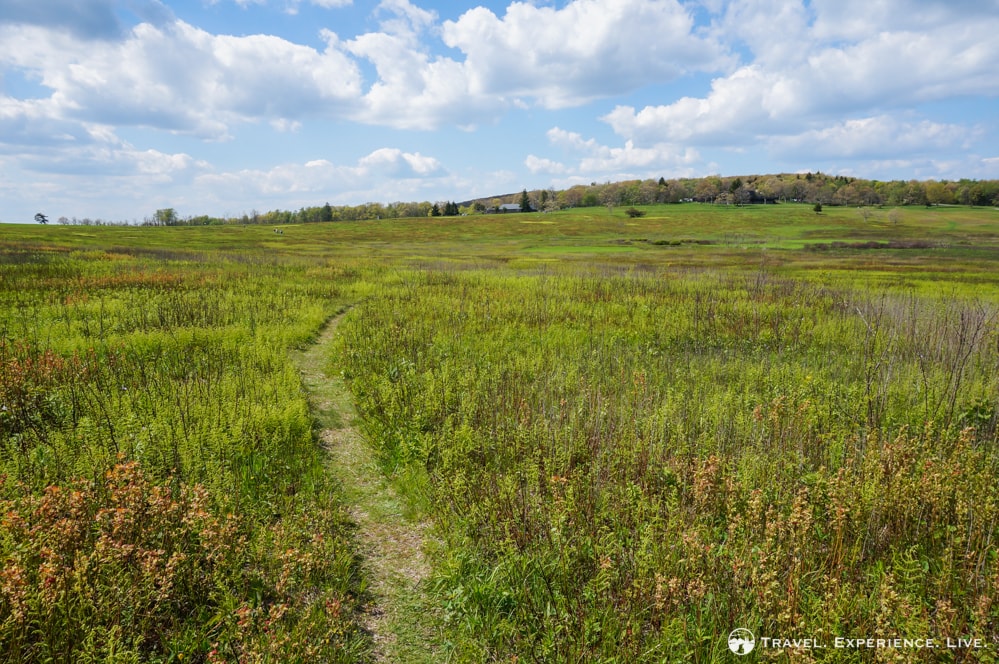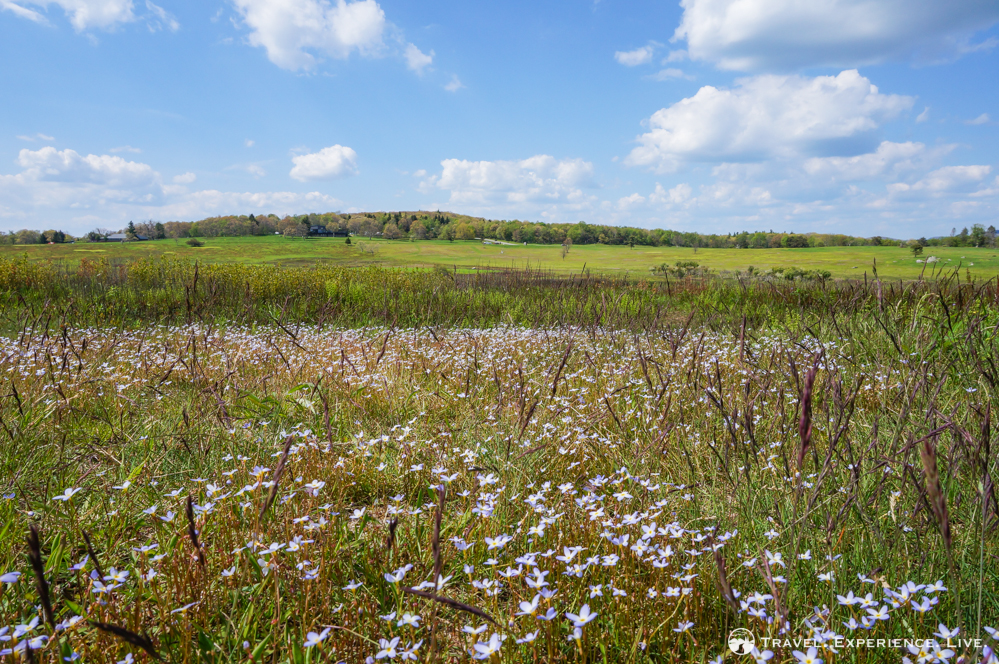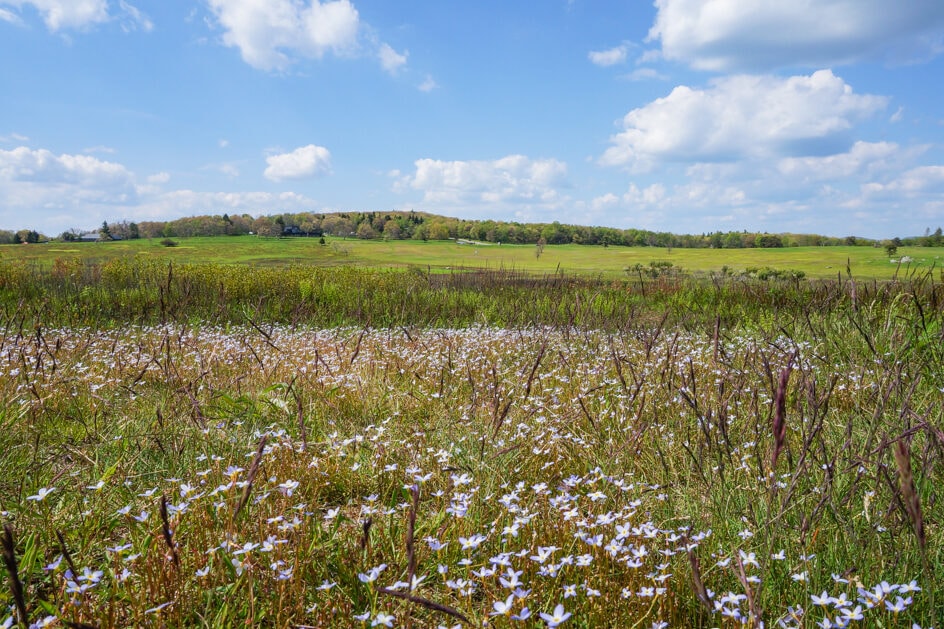A Walk in Big Meadows, Shenandoah National Park
Big Meadows is one of the star attractions in Shenandoah National Park. Situated on milepost 51, this large expanse of grasslands dotted with patches of trees and groups of shrubs is absolutely worth a stop.
This is also the location of the excellent Byrd Visitor Center, a complex consisting of an exhibit on Shenandoah National Park’s human history, a well-filled book store, public bathrooms, an information desk, a gas station, a wayside coffee shop, and tall windows and chairs overlooking Big Meadows across Skyline Drive.
Along a road behind the Byrd Visitor Center lies the Big Meadows Lodge and Campground, which feature picnic areas, an old-fashioned “Great Room” with a stone fireplace, and cabins.
These facilities make Big Meadows a fine place to base yourself during a visit to Shenandoah National Park. If you’re staying elsewhere or are on a day trip, it still makes for a recommended stop; a great place to stretch your legs.
Big Meadows is without question one of the park’s most fascinating biozones, a sprawling area of golden and silvery meadows, which are favored grazing and foraging spots among deer, birds and other wildlife in Shenandoah National Park.

This open landscape is thought to be used by Native Americans who used to hunt and camp there as early as 8,000 years ago—its geological history goes back way further, about 40,000 years.
Modern human history of Big Meadows start sometime in the late 1700s when homesteaders began moving into the area, taking advantage of this huge clearing in the woods created by the Native Americans.
Big Meadows was the location of a rather large camp of the Civilian Conservation Corps in 1933 and was the very place where President Franklin D. Roosevelt dedicated the park in 1936. During the Second World War, it was used as a campsite by more than 2,000 U.S. Army Corps of Engineers soldiers.
As this large grassland is not a natural biotope in the Blue Ridge Mountains—the woods constantly try to reclaim the land—, the park’s rangers have to use various techniques to keep this historic landscape the way it currently is.
Methods used include mowing, controlled burning and spraying, which is why you might find certain areas that look distinctly younger, greener and/or fresher.

Big Meadows is an ideal place to go for a leisurely walk in Shenandoah National Park. There is hardly any change in elevation and the meadows are crisscrossed by a maze of trails. There is no officially designated trail there, but rather a network of clearly distinguishable paths.
You can park your car either at the Byrd Visitor Center parking lot or at the smaller parking area across the road, on the left side just past the visitor center if you’re coming from the north (or on the right side just before the visitor center if coming from the south).
Big Meadows is less than a mile (1.6 kilometers) across and you can take as long as you want to explore this beautiful area. Walks can last fifteen minutes, but might just as well take all afternoon.
This is a biodiversity hotspot, so make sure to look down and notice all the different plants and wildflowers thriving there, from blueberry bushes to milkweed, from asters to all kinds of grasses and herbs.
If you come across a deer, say “hi” but don’t feed it! Black bears might occasionally be spotted as well, particularly in the evening and along the meadows’ edges.

Another suggested place to go for a walk near Big Meadows is Dark Hollow Falls. This trailhead lies at milepost 50.7 less than half a mile (600 meters), from Big Meadows and leads down to a beautiful series of cascades.













